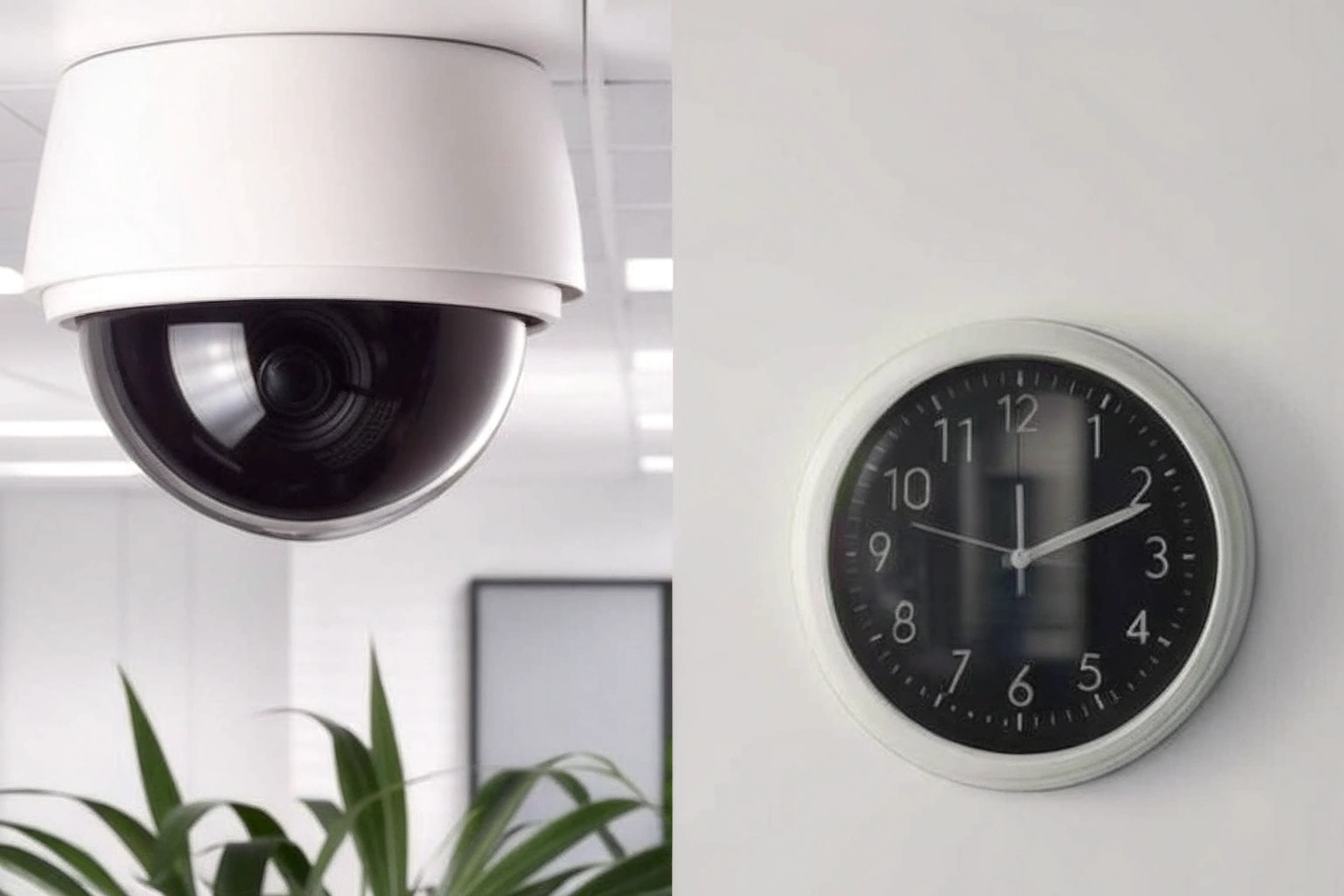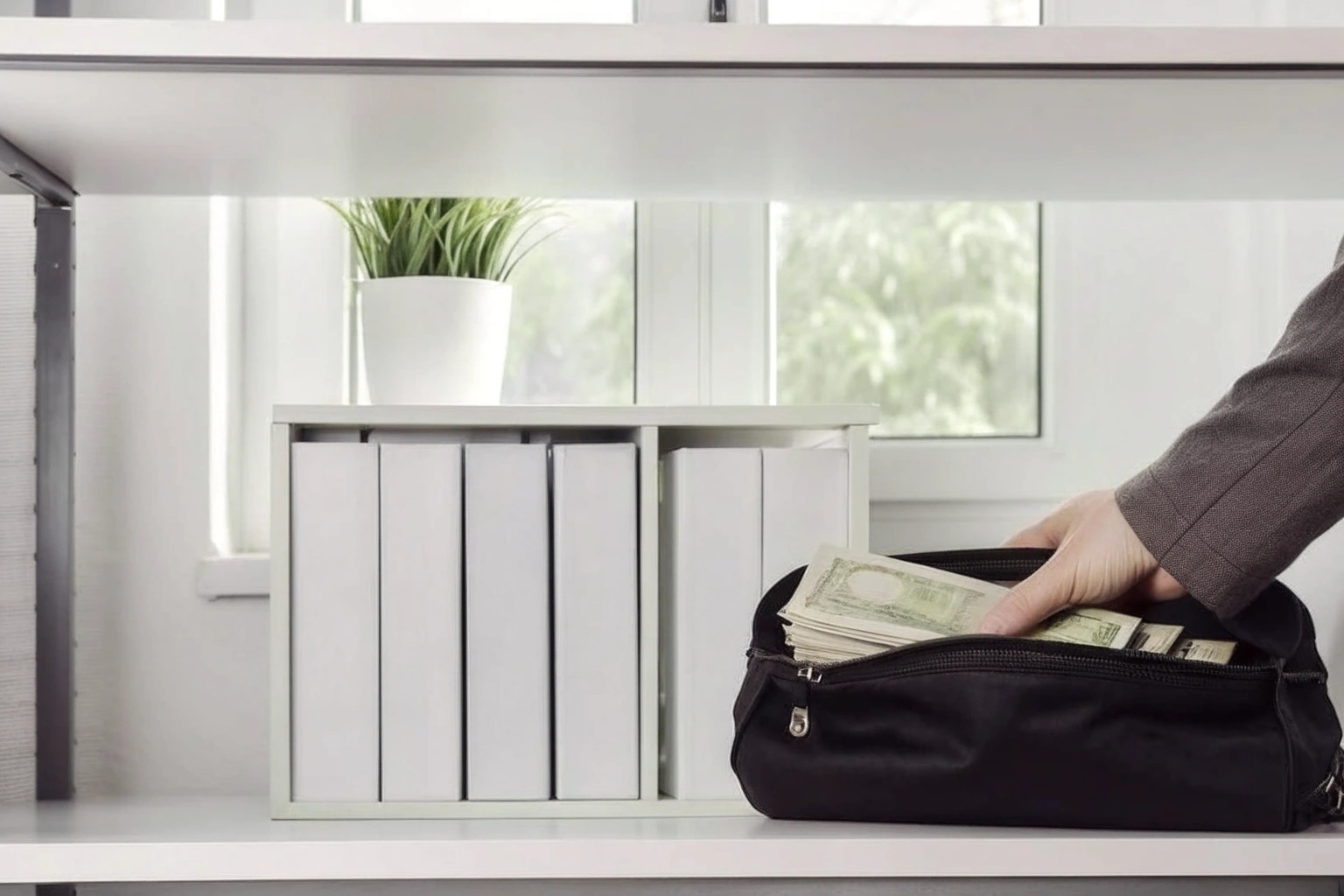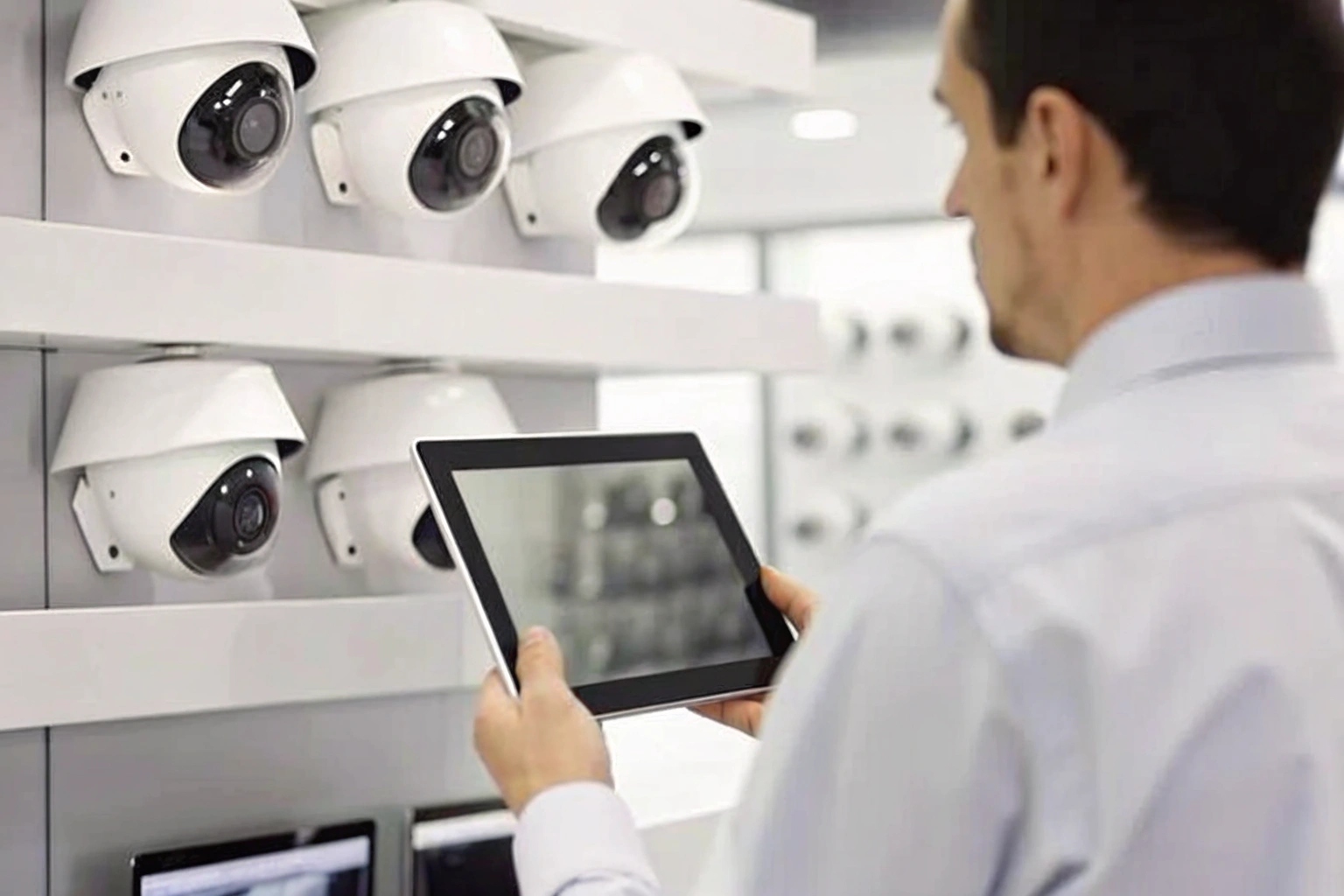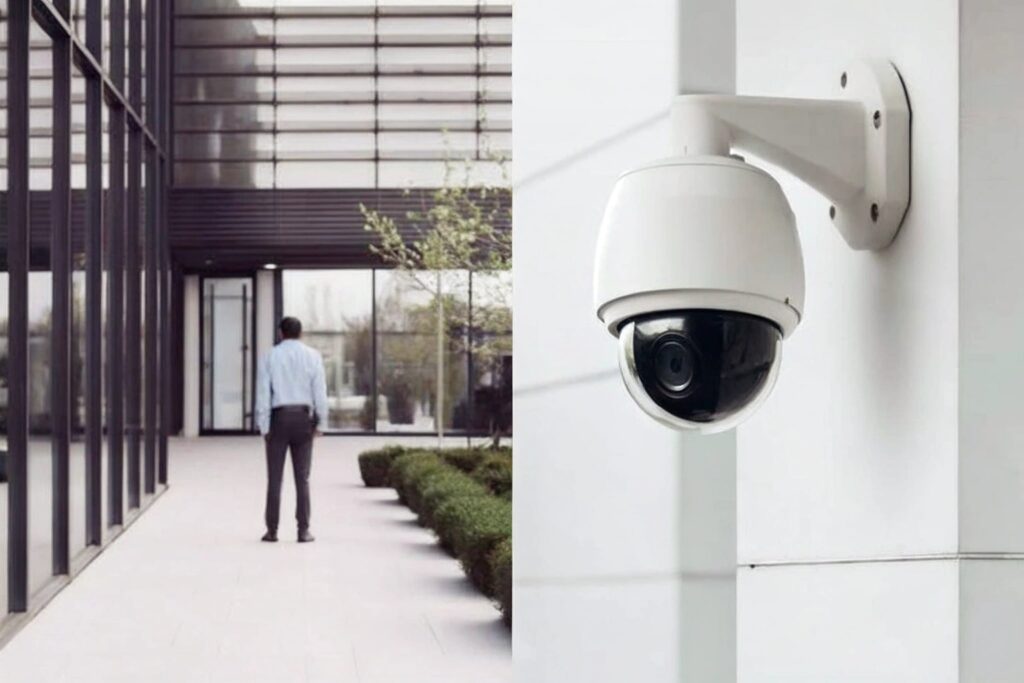Are you worried that your standard security cameras aren't enough? You see them on the wall, but profits are still mysteriously shrinking, and you suspect internal issues are the real problem.
The best security strategy for a commercial business often combines both visible and covert surveillance. Visible cameras act as a powerful deterrent for general crime, while hidden cameras are essential for discreetly investigating specific internal threats like employee theft or corruption without creating a hostile work environment.

Deciding on the right mix is a critical decision that many business owners struggle with. A wall full of dome cameras might stop a shoplifter, but it won't uncover a sophisticated internal theft ring. On the other hand, relying only on hidden cameras means you miss out on the powerful deterrent effect of visible security. The secret is to understand the unique strengths of each type and deploy them intelligently. As a manufacturer, I've guided countless partners, from small retailers to large distributors, in creating a security plan that truly protects their assets from both external and internal threats.
What are the two main types of surveillance, and which should I use?
Feeling confused by all the different security cameras out there? Picking the wrong type is like using a hammer to turn a screw—it’s a waste of money and won't solve your actual problem.
The two main types are overt (visible) and covert (hidden) surveillance. You should use overt cameras to deter crime and make customers feel safe. You should use covert cameras to gather evidence on specific issues, like employee misconduct, when you need to see what happens when people think no one is watching.

The choice between overt and covert isn't just about the hardware; it's about your security goal. I always tell my clients, like Agnieszka Daniel who runs a successful e-commerce site in Poland, to start by asking: "What specific problem am I trying to solve?" The answer to that question immediately points to the right solution. Overt cameras are a loud, clear message: "This area is protected." They are a shield. Covert cameras are quiet and discreet. They are a tool for investigation. A comprehensive security plan for a commercial space almost always needs both. For example, you would place visible cameras at all entrances and exits, but a covert camera, perhaps one of our QZT USB charger models, could be placed in a stockroom where you suspect inventory is going missing.
Overt (Visible) Surveillance
This is your first line of defense. Think of classic dome, bullet, or turret cameras mounted in plain sight. Their primary job is deterrence. When potential criminals see a camera, they are much less likely to target your business. This is effective for preventing crimes like burglary, vandalism, and shoplifting. Visible cameras also have a secondary benefit: they can increase the sense of security for both your employees and your customers. They show that you care about safety. However, their biggest weakness is that they are visible. A dishonest employee knows exactly where the blind spots are and can easily avoid being seen.
Covert (Hidden) Surveillance
This is where my company, QZT, specializes. Covert surveillance is for investigation, not deterrence. When you have a specific problem, like a recurring cash shortage or suspicion of data theft, a hidden camera is the only way to get unbiased proof. These cameras are disguised as everyday objects—clocks, smoke detectors, or even DIY modules you can place anywhere. Their purpose is to capture events as they naturally happen. This is crucial for sensitive internal matters. An employee involved in misconduct will act differently if they know a camera is watching. Covert cameras give you a true picture of what’s happening, providing the hard evidence you need to act.
| Feature | Overt (Visible) Surveillance | Covert (Hidden) Surveillance |
|---|---|---|
| Primary Goal | Deterrence, General Security | Investigation, Evidence Gathering |
| Best For | Preventing external crime | Uncovering internal theft/fraud |
| Employee Awareness | High (Meant to be seen) | Low (Meant to be hidden) |
| Behavioral Impact | Changes behavior (deterrent) | Captures natural behavior |
| Example Products | Dome Cameras, Bullet Cameras | Clock Cameras, USB Chargers |
What are the real advantages of using covert surveillance?
You suspect a serious internal problem, but you have no proof. Making a baseless accusation could destroy team morale and even lead to legal action against you, leaving the real issue unresolved.
The key advantage of covert surveillance is capturing unfiltered, truthful evidence. It lets you confirm suspicions about employee corruption or theft discreetly. This protects your business with concrete proof while avoiding a workplace environment of widespread distrust that visible cameras can sometimes create.

I speak with business owners all the time who are in this exact tough spot. A client of mine in Italy, Daniel Adriano, was dealing with a persistent inventory shrinkage problem in his warehouse. His visible cameras showed nothing out of the ordinary. The staff knew where the cameras were. I recommended he use one of our Tuya DIY modules placed inside a nondescript cardboard box on a shelf. Within a week, he had clear video evidence of an employee methodically under-scanning pallets and selling the excess to a friend. The evidence was undeniable. This is the power of covert surveillance: it provides clarity in complex and sensitive situations. It’s not about spying on everyone; it’s about protecting your business from genuine threats when all other methods fail.
Gathering Undeniable Evidence
The main purpose of a hidden camera is to see what people do when they think no one is watching. In cases of employee corruption, this is the only way to get proof. Whether it's stealing cash from a register, taking products from a stockroom, or even sharing sensitive company data, people will not do these things in front of a visible camera. Covert cameras record the unfiltered truth. This unshakeable evidence is essential for internal disciplinary action and, if necessary, for legal proceedings. It removes all doubt and allows you to resolve the issue based on facts, not suspicions.
The Shift to Compliant Manufacturing
For years, many of these specialized cameras were produced in Shenzhen, China. However, as you may know, Chinese laws tightened significantly in 2024. This caused major supply chain disruptions, as many factories could no longer legally produce or export these devices. This left many European businesses, who rely on these tools for legitimate security investigations, without a reliable supplier. Seeing this shift, we at QZT made a strategic move. We transferred our production to Vietnam, ensuring our operations remain fully compliant with international regulations. Our clients now have a stable, legal, and reliable source for high-quality covert surveillance tools. We provide all the necessary CE/ROHS certifications, giving them peace of mind that their supply chain is secure and their products are legal for the EU market. Our warehouse in Italy further supports this by providing fast, localized service. It's a solution born from foresight and a commitment to our partners.
How do I choose the right video surveillance system for my business?
You need a surveillance system, but the options are overwhelming. The technical specifications are confusing, and making the wrong choice means you are left with a costly system that doesn't even solve your security problem.
Choosing the right system is a three-step process. First, clearly define your goal: general deterrence or specific investigation? Second, evaluate the physical environment. Finally, and most critically, choose a trustworthy supplier who provides certified products and reliable, local support for a long-term partnership.

This process is something I walk my B2B clients through every day. They are experienced e-commerce owners, like Piotr Nowak from Poland, and are cautious and detail-oriented. They don't want the cheapest product; they want the right product from a supplier they can trust for years. They know that the supplier is just as important as the technology itself. A cheap, uncertified camera from an unreliable source is a liability, not a security tool. It could fail at a critical moment or even pose a legal risk. That’s why my focus is always on building that long-term, trusted relationship, backed by our fully certified products and our local warehouse in Italy that can provide immediate support.
Step 1: Define Your Primary Goal
Before you look at a single camera, ask yourself one question: "What am I trying to achieve?" Your answer determines everything.
- Goal is Deterrence: If you want to prevent shoplifting, vandalism, and break-ins, you need a highly visible overt system. The goal is for everyone to see the cameras.
- Goal is Investigation: If you need to confirm suspicions of internal theft, fraud, or other misconduct, you need a covert system. The goal is for the camera to go completely unnoticed.
- Goal is Hybrid: For most businesses, the answer is a mix of both. Visible cameras for public areas and covert cameras for sensitive spots like cash offices or stockrooms.
Step 2: Assess Your Environment
Once you know your goal, look at the physical space.
- Lighting: Is the area well-lit, or do you need to record in the dark? If it's dark, you need a camera with good infrared (IR) night vision. All our QZT hidden cameras come with high-quality, no-glow IR LEDs for this purpose.
- Connectivity: Is there a strong Wi-Fi signal in the area? If so, a Wi-Fi camera that offers remote viewing is a great choice. If there is no Wi-Fi, you'll need a self-contained unit that records directly to an SD card.
- Power: Is there a power outlet nearby? A plug-in camera, like a USB charger camera, offers continuous recording. If not, you'll need a battery-powered device and must consider the expected battery life.
| Decision Checklist | Overt System | Covert System |
|---|---|---|
| I want to prevent crime. | ✔️ | |
| I want to investigate an issue. | ✔️ | |
| The area is a public space. | ✔️ | |
| The area is a sensitive workspace. | ✔️ | |
| I need undeniable proof. | ✔️ |
Step 3: Choose a Trustworthy Supplier
This is the most important step. A great camera is useless without a reliable partner behind it. For my clients in Europe, this means a supplier who understands their market. They need verifiable CE/ROSH certifications, which are non-negotiable for legal sales in the EU. They need proper invoicing for their accounting. And they need stability. They don't have time to find a new supplier every year because the last one shut down. Our move to Vietnam and our warehouse in Italy are designed to provide exactly this: a stable, compliant, long-term partnership.
Conclusion
Ultimately, the best security uses both visible cameras for deterrence and covert ones for investigation. Most importantly, find a stable manufacturing partner who provides certified, legal products and understands your market's needs.


